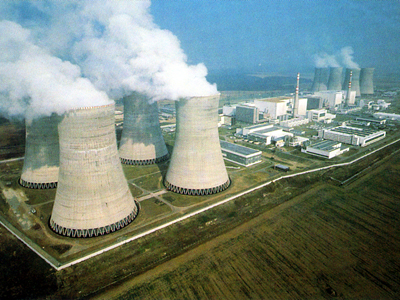Alternative Energy Technical Report by PINC Research
 Although, the government would like the share of renewables in electricity production to increase, prima-facie higher capital investment and security concerns surrounding construction may make it difficult to fully capitalise upon this domestic energy resource.
Although, the government would like the share of renewables in electricity production to increase, prima-facie higher capital investment and security concerns surrounding construction may make it difficult to fully capitalise upon this domestic energy resource.
Significant developments in nuclear trade:
In Sep 2008, the Nuclear Suppliers Group (NSG) adjusted its guidelines to remove India from the list of countries barred from nuclear trade. The NSG Waiver along with Indo US nuclear deal(2005) is expected to generate an additional 25,000 MW of nuclear power by 2020.
During the recent visit of French president Nicolas Sarkozy, India and France has signed agreements for two 1,650 MW nuclear power plants at Jaitapur in Maharashtra hoping that the nuclear park at Jaitapur would ultimately supply 10,000 MW of electricity going ahead in future.
Key challenges:
India’s domestic uranium reserves are small and it is dependent on uranium imports to fuel its nuclear power industry. Thorium as an alternative to uranium provides hundreds of times the energy with the same mass of fuel, but the technology is not yet developed for commercial use.
The amount of nuclear fuel required for the electricity generation sector is far greater than that required to maintain a nuclear weapons programme. A significant increase in nuclear power is a long-term, not a short-term, option due to huge investment, delay in execution and other controversies relating to safety concerning nuclear programme.
Only about 25 percent of the vast hydel potential of 150,000MW has been tapped so far. It takes about 10 years for developing a large size hydro project from planning to commission.
The recent nuclear crisis at Japan’s nuclear plant instigated by the earthquake and tsunami poses safety concerns pertaining to nuclear power as the alternate source of energy. The catastrophic proportion that the damaged nuclear power plant has reached clearly highlights the need to re-consider nuclear power as the viable energy option.
Renewable Energy: India is the first country to have a dedicated Ministry of new and renewable energy sources (MNRE).
Key challenges:
Inherent and intermittent nature of renewable energy sources leading to low capacity utilisation factors ranging from about 17% to 70%, depending on resource and location; and also need for storage.
Relatively higher capital investment compared to conventional power projects.